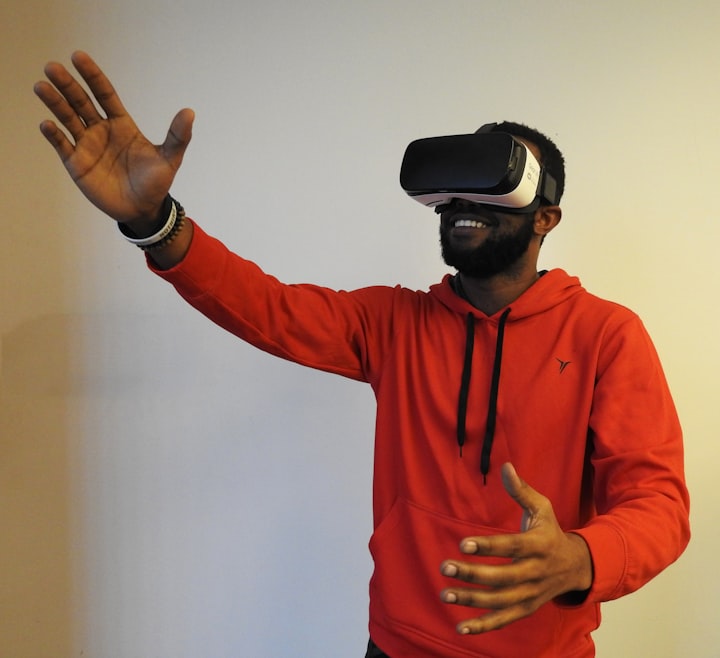Unlocking the Infinite Potential
Exploring the Intersection of Crypto Art and Virtual Reality

Introduction:
The world of art has always been a captivating realm where creativity and innovation converge. In recent years, two groundbreaking phenomena have emerged and captured the attention of enthusiasts and investors alike: crypto art and virtual reality (VR). Combining the unique characteristics of both, the intersection of crypto art and VR has created an exhilarating new frontier for artists, collectors, and tech enthusiasts. In this article, we delve into this exciting convergence, examining its transformative potential, exploring notable examples, and envisioning a future where these two powerful mediums intertwine seamlessly.
The Rise of Crypto Art:
Crypto art, also known as digital art or NFT art (non-fungible token art), has revolutionized the traditional art market by leveraging blockchain technology. It enables artists to tokenize their creations and sell them as unique digital assets. This breakthrough development provides artists with new ways to monetize their work and establish direct relationships with collectors, eliminating intermediaries.
The viral keyword "Blockchain Revolution" signifies the transformative impact of blockchain technology on various industries, including art. It has captured the attention of mainstream media and tech-savvy individuals worldwide.
The Immersive World of Virtual Reality:
Virtual Reality, often abbreviated as VR, has long been associated with immersive gaming experiences. However, its potential extends far beyond gaming. VR technology allows users to immerse themselves in a digital environment, providing a sense of presence and interactivity. From architecture to education, VR is revolutionizing various fields.
The viral keyword "VR Revolution" indicates the transformative nature of virtual reality, capturing the imagination of millions seeking new and immersive experiences.
Crypto Art Meets Virtual Reality:
When crypto art and virtual reality intersect, they create a dynamic fusion that offers limitless possibilities. By combining the digital nature of crypto art with the immersive capabilities of VR, artists can transport viewers into captivating virtual worlds, blurring the boundaries between reality and imagination.
Notable Examples:
a. CryptoVoxels: CryptoVoxels is a virtual world built on the Ethereum blockchain, where artists can create and showcase their crypto art within a 3D environment. This platform allows collectors to explore galleries, attend art openings, and interact with artists, fostering a vibrant community.
b. Rarible VR Gallery: Rarible, a leading NFT marketplace, has embraced VR by creating a virtual gallery that exhibits digital artwork. Users can navigate the gallery, marvel at the displayed creations, and even purchase NFTs directly within the virtual space.
c. Museum of Crypto Art (MoCA): MoCA, an online museum dedicated to showcasing crypto art, has embraced VR technology to enhance the viewing experience. By donning a VR headset, visitors can virtually wander through beautifully curated exhibitions, engaging with art in an entirely new way.
The keywords "CryptoVoxels," "Rarible VR Gallery," and "Museum of Crypto Art" can generate viral interest due to their association with popular platforms at the forefront of the crypto art and VR intersection.
The Future Possibilities:
As the relationship between crypto art and VR continues to evolve, the future promises even more exciting prospects. Here are a few potential avenues:
a. Interactive Art Installations: Artists can create immersive installations that invite viewers to actively engage with the artwork. Through VR, visitors can interact with the environment, altering the art's appearance or triggering unique experiences.
b. Live Art Performances: VR opens up the possibility for artists to host live performances in virtual spaces, transcending geographical limitations and reaching a global audience in real-time.
c. Collaborative Art Projects: Artists from around the world can collaborate on shared virtual canvases, blending their unique styles and perspectives to create groundbreaking pieces of art.
d. Virtual Art Galleries and Exhibitions: VR can provide artists and collectors with the opportunity to curate their own virtual galleries or participate in international exhibitions without physical constraints.
Conclusion:
The intersection of crypto art and virtual reality has ignited a transformative wave in the art world, offering artists and enthusiasts unprecedented opportunities for creation, discovery, and engagement. By leveraging blockchain technology and immersive virtual environments, this fusion enables artists to transcend traditional boundaries, reaching global audiences in groundbreaking ways. As the future unfolds, the limitless potential of crypto art and VR holds the promise of reshaping how we perceive, create, and appreciate art.
About the Creator
Curtis Otiende
Unlock knowledge and inspiration in a world of captivating articles. Delve into science, history, arts, and more. Join a community of curious minds. Let's explore together!





Comments
There are no comments for this story
Be the first to respond and start the conversation.